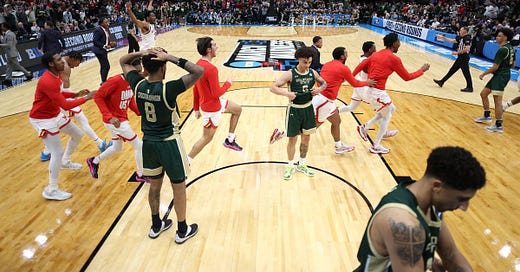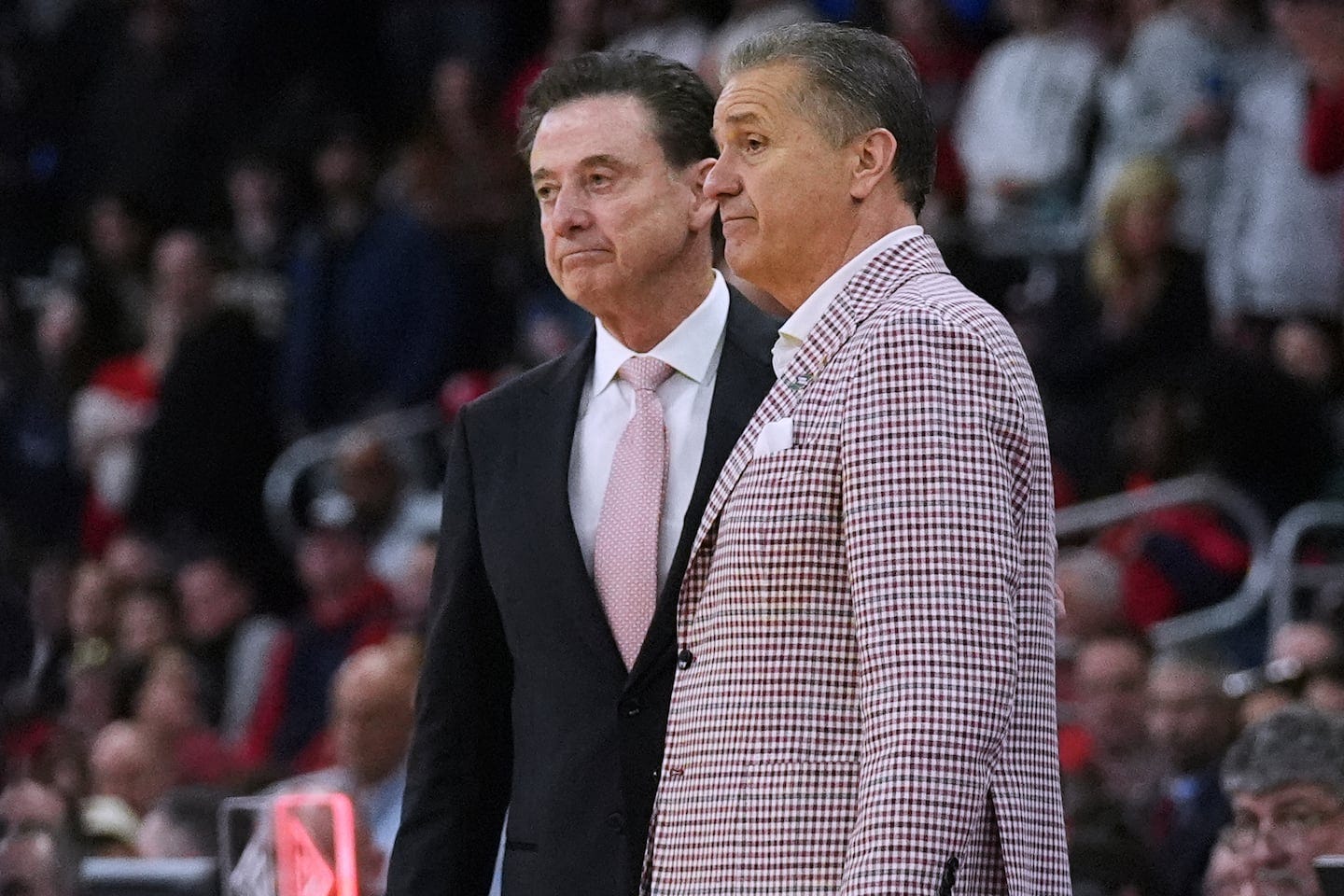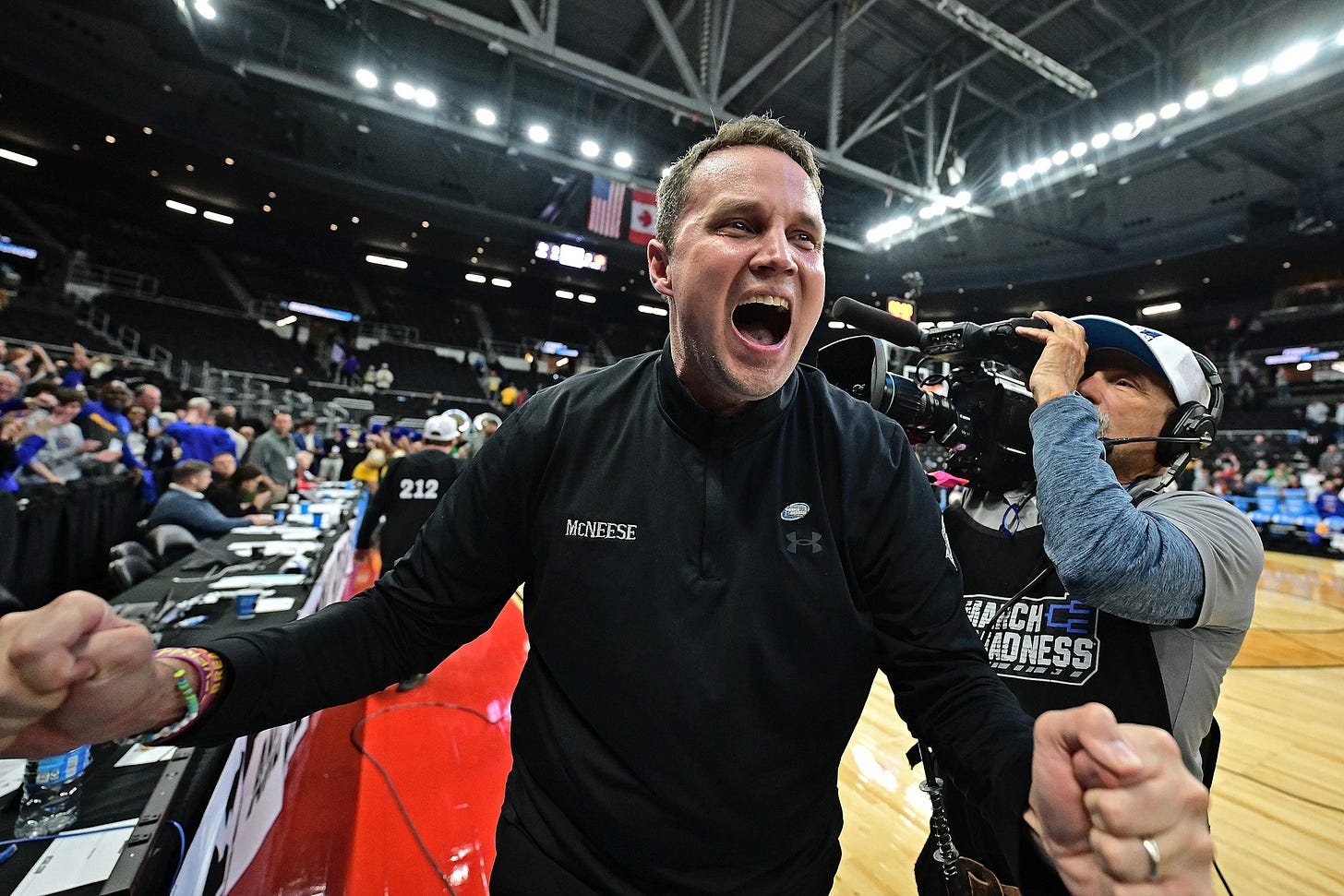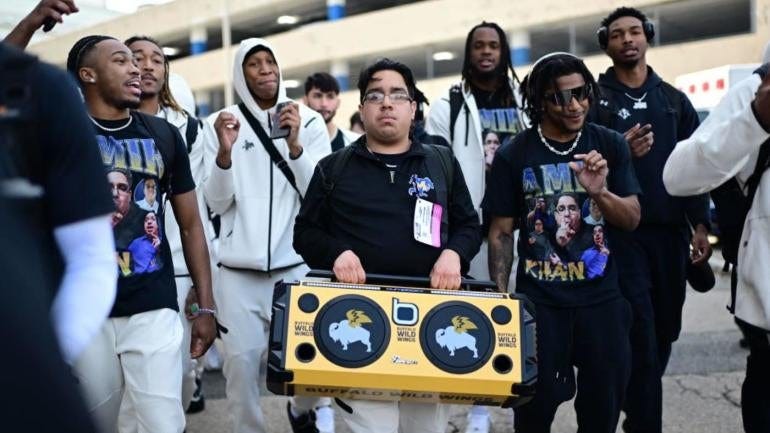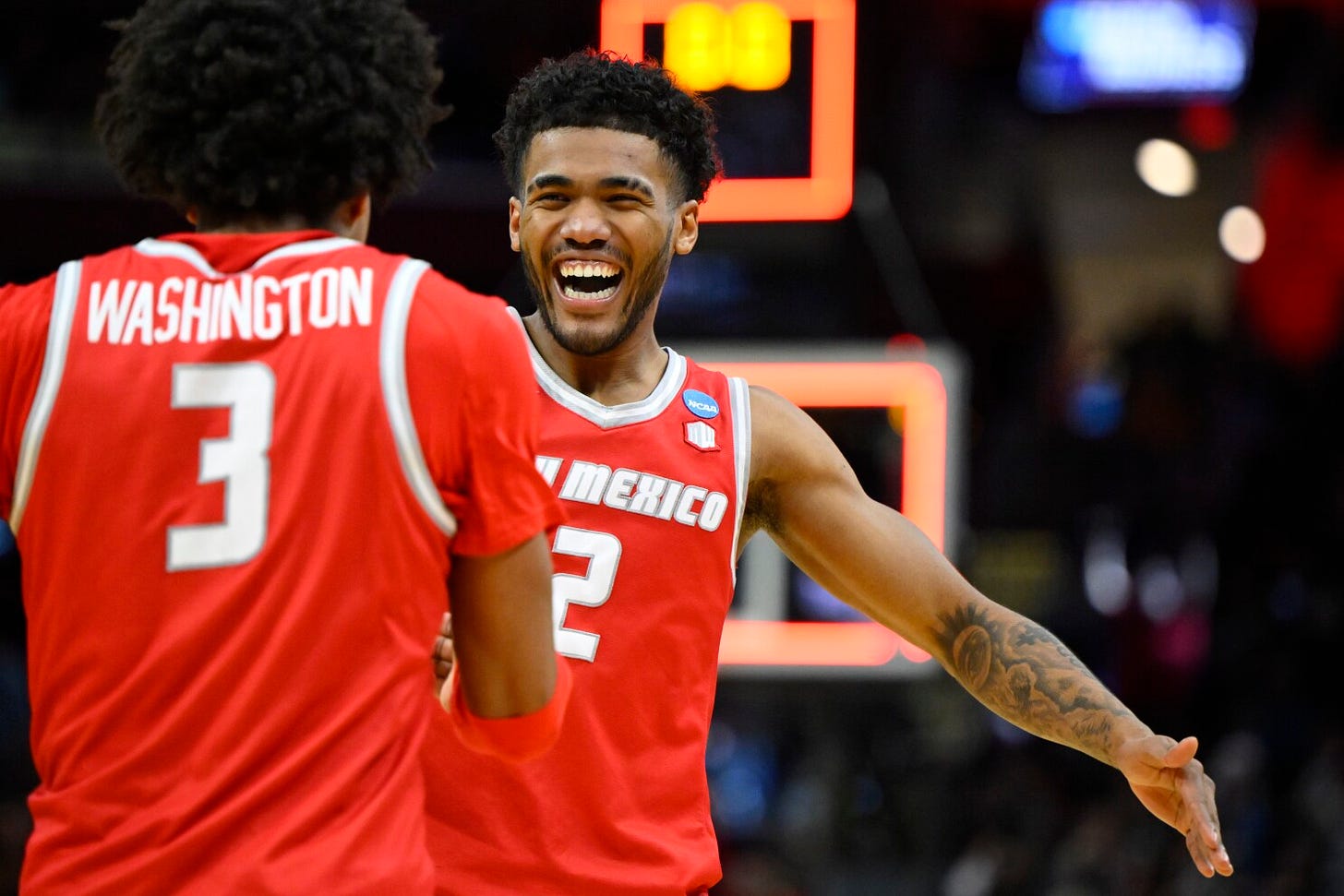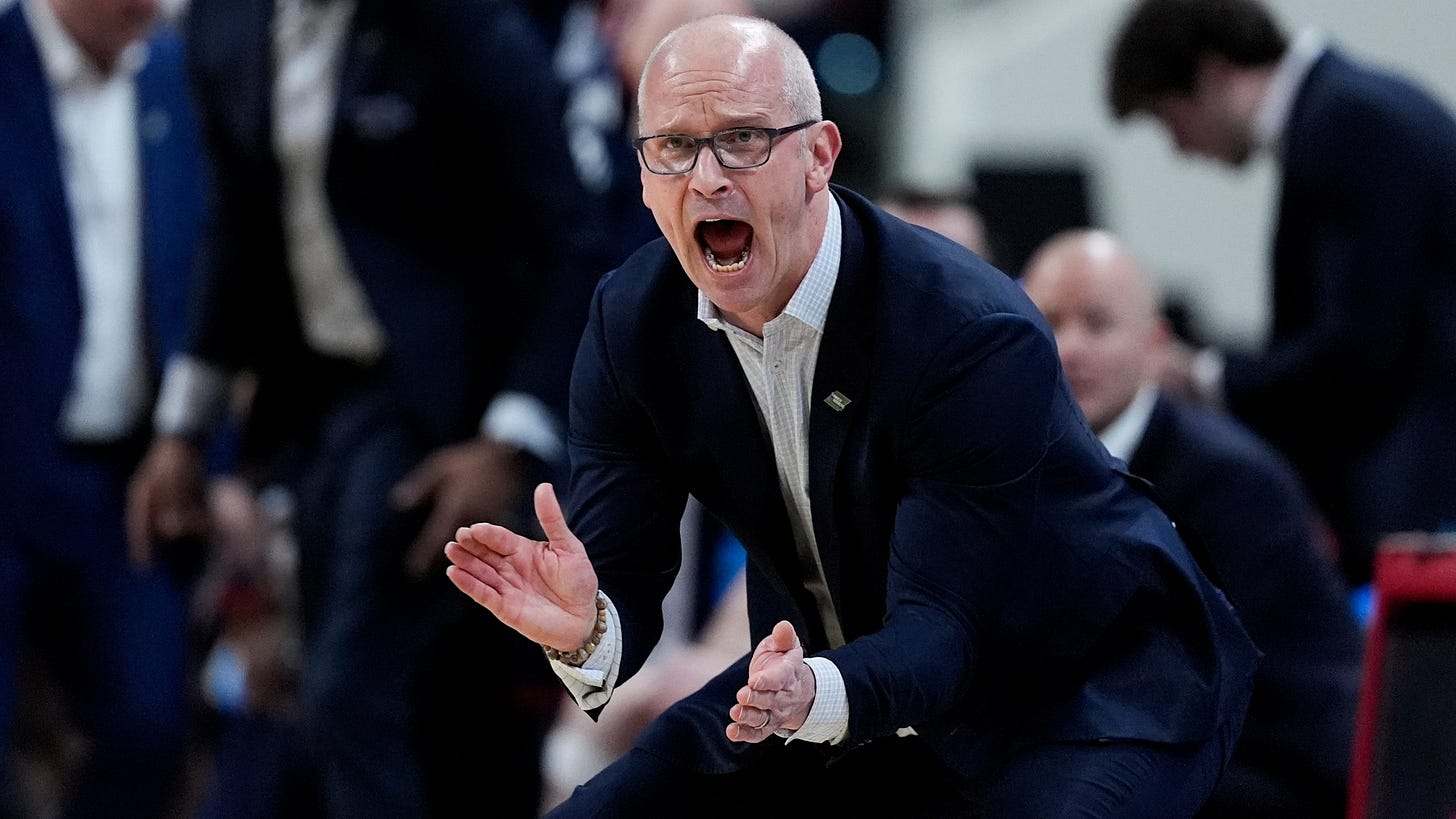Some thoughts and observations from the first week of the NCAA Tournament
A look at some of the bigger and perhaps more overlooked developments from the early rounds of March Madness
This is hardly a novel idea, but there are no days on the American sports calendar better than the first two days of the NCAA men’s basketball tournament, particularly that first day, when the chaotic joy of 12 consecutive hours of basketball is such a foreign-yet-welcome feeling.
For all the first and second round of the tournament provides us, it can be a bit overwhelming at times. Since Louisville and Creighton tipped off Thursday’s action, 32 games have transpired, thousands of points have been tallied and that Geico little piggy ad has aired approximately 34,647 times (at least my two year old loves it).
To get a better sense of some of the madness, I wanted to go over some of the more interesting developments and stories over the tournament’s first four days, at least as I saw them. This isn’t meant to be comprehensive; you won’t see top seeds like Auburn or Houston mentioned here, for example.
But after doing something similar last year, I wanted to give it another go because the tournament, as it always does, provided us endless reminders of why we love it so much.
Rick Pitino and John Calipari follow a familiar script
To be honest, coaching matchups typically do very little for me. If any tension or acrimony between two coaches is reflected on the court by their players – or if there’s a stylistic clash – sign me up. But otherwise, it’s mostly pregame fodder. Once the game tips off, I’m much more interested in, say, how the starting point guards match up rather than the fact that their coaches, who are just standing on the sideline wearing designer suits while barking instructions at their players, don’t like each other.
When it comes to John Vincent Calipari and Richard Andrew Pitino, though, I’m willing to make an exception.
They’ve been arguably the two defining figures of the sport of the past 40 years – Pitino the first to truly embrace the 3-point line and Calipari the pioneer of building rosters around freshmen – and, of course, were the central characters for close to a decade in college basketball’s most intense rivalry. In a story last week, Brendan Quinn of The Athletic, as he so often does, summed it up beautifully:
The two have long existed with this shared kinetic energy. Pitino and Calipari have a similar aura, always have. The suits. The sound. The hair. You imagine them at an Italian restaurant, maybe at a table at Camille’s or elbows up in the back bar at Massimo’s. Such a reality might’ve been the case in another life. But college coaching is a profession built on a rickety bridge of fragile friendships that can rot away with each tipoff, every recruiting battle and the always dangerous game of measuring one against the other.
Saturday’s second-round matchup between Pitino’s St. John’s team and Calipari’s Arkansas squad had everything. Arguably two of the most talented teams in the country, both with high-priced rosters. A spot in the Sweet 16 on the line. Even the game’s location in Providence, which Calipari hilariously (and accurately) proclaimed an “Italian city!” earlier in the week, added to the aura.
The game itself was gripping, surprisingly so for a contest in which the teams combined to miss 37 of their 41 3-pointers. The Razorbacks, who led for much of the afternoon, briefly gave up the lead to the Red Storm late in the second half only to rally, put the clamps down and come out on top and end what had been a magical St. John’s season much earlier than many anticipated.
Surprising as it may seem, with a No. 10 seed knocking off a No. 2 seed that was a popular Final Four pick, the result felt oddly familiar. Since Darius Washington famously choked at the free-throw line 20 years ago in the Conference USA title game, Calipari has largely had his way with Pitino, posting a 9-2 record against what many consider to be one of the most gifted minds and motivators in the sport’s history.
Among those 11 results, one in particular stands out as a striking parallel to what unfolded Saturday in the Ocean State. In 2014, a Kentucky roster loaded with five-star players that had underachieved much of the regular season before catching fire late – sound familiar? – squared off in the Sweet 16 against a veteran-laden Pitino-led Louisville team with valid national title aspirations. The Wildcats, a No. 8 seed, pulled off the win and made it all the way to the national championship game before falling to UConn.
The two games shared many of the same elements, from the roster construction to their season trajectories to the head-scratching way the game transpired, with an experienced roster appearing tight in the game’s decisive moments. Eleven years later, history repeated itself.
The disparity between Calipari and Pitino is baffling. The overwhelming majority of people in the sport would consider Pitino the superior tactician, which should, including in a year like this, be enough to overcome whatever talent advantage Calipari has. But a man who has so few weaknesses has one especially notable one. And, tragically for him, it happens to be his biggest rival.
Will Wade’s redemptive arc
Consider this section a mea culpa.
While writing a year and a half ago about how Black assistant coaches were scapegoats of the FBI’s probe into college basketball, I singled out Will Wade as a poster child for what was wrong with college basketball in its post “we have your playbook” era. Was McNeese that desperate for a few days of media coverage that it would hire the most brazen cheater from that whole saga, someone who, for all those allegedly dropped bags, never advanced past a Sweet 16?
As it turns out, it was a shrewd move. The relatively anonymous Louisiana school gained an untold amount of visibility over the past several days as it scored one of the few early-round upsets of the tournament, knocking out No. 5 seed Clemson last Thursday. It capped off a two-year run for Wade at the school in which he went 50-9 and made back-to-back NCAA Tournament appearances. Before his hiring, the Cowboys had just two tournament berths since it started competing at the Division I level in 1972.
It wasn’t just that Wade won that broke through, even if I clearly discounted his Xs-and-Os abilities as a coach. It was the way he went about it last week.
When asked last Wednesday ahead of his team’s matchup with Clemson about whether he had been in contact with NC State about its coaching vacancy, he said that yes, he had, and that he had been transparent with his players about the process. It’s a stark contrast from many coaches, who are publicly cagey, if not outright dismissive, and will sometimes leave their team with little more than a group text message (or, if you’re Bobby Petrino, a note) as they’re on their way to their new gig.
After his team fell to Purdue in the second round, ending the season and his time at McNeese, Wade was emotional, wiping away tears during his press conference. He declined to talk about the NC State job that was awaiting him, not in a disingenuous way, but to savor his final moments with his team or, as he put it, “put a bow on everything with McNeese if we can.”
“I'm a believer in second chances,” Wade said. “A lot of people in our program are second chances – myself, the players. That's kind of why we're close. We got a lot of stuff that bonds us together, and so I'm a big believer in it and hopefully we did right by the people who gave us a second chance.”
For years, Wade made for an easy villain and punchline, the coach with the “strong-ass offers” who comically outbid the competition for players and never truly won big with all those high-priced dudes. In the time since his last game at LSU, though, college sports changed dramatically, becoming both a more just and more transactional place. If anything, Wade may have just been a pioneer. And after his final act at McNeese, he showed it can be done with a measure of grace and self-awareness.
I’m glad McNeese lost when it did
Perhaps even more than Wade, McNeese’s brief run in the tournament was defined by student manager Amir “Aura” Khan.
Khan became a national sensation in late February, when video of him leading the Cowboys out to the court rapping along to “In & Out” by Lud Foe – which played from a boombox hanging from his neck – went viral. When McNeese made the NCAA Tournament and he guided them on that familiar journey to the floor, and with CBS cameras picking it up, his fame only grew, allowing him to pick up name, image and likeness deals reportedly worth a collective six figures.
The story was endearing, with Khan emerging as one of the folk heroes that have a tendency to spring up around this time of year every year, but I’ve gotta say – I’m glad McNeese got bounced when it did, if only to save Khan from the perilous fate of being overexposed.
In the leadup to the game against Purdue, Khan had his own security personnel. He was wearing a custom jumpsuit with his nickname printed on the back. One of the Cowboys’ staffers had become his de-facto manager, fielding calls from more than 100 brands interested in signing him to a deal. The boombox he’d carry out with him before a game suddenly had Buffalo Wild Wings logos over the speakers.
I’m thrilled for Khan to be able to capitalize on his newfound fame because who knows if he’ll ever have this kind of financially lucrative opportunity ever again. But for all the joy these tournament cult heroes bring when they’re first discovered, much of that ends up getting sapped by the time they’ve reached a certain point in their journeys with celebrity. Media outlets know these people are a reliable source for web traffic and they churn out story after story after story, even long after the public appetite has been satisfied (for the sake of transparency and self-awareness, my employer’s not immune from this broader trend). From watching both of McNeese’s games, I felt like I knew much more about Khan than I did Javohn Garcia or Sincere Parker, the team’s two leading scorers.
None of this is Khan’s fault, of course. He’s simply along for a high-speed ride over which he has little control, much like how it was for then-98-year-old Loyola Chicago team chaplain Sister Jean Dolores-Schmidt seven years earlier. But it’s better for everyone involved for Khan’s time in the spotlight to end before slight annoyance gives way to resentment.
John Calipari exorcises his demons
Calipari’s rapidly declining approval rating among Kentucky fans in his final few years at the school can be tied to a number of factors – an unease that always existed with the program being an NBA development vehicle, Calipari having the back of his overwhelmingly Black roster during the largest racial justice movement in decades — but mostly, it was about a lack of NCAA Tournament success, with deep runs giving way to quick exits.
A year later, and in a different job, quite a bit has changed. Calipari won more NCAA Tournament games last week than he did in his final five years with the Wildcats. Kentucky, meanwhile, has advanced to the Sweet 16 for the first time in six years, doing so with an injury-riddled roster that first-year coach Mark Pope has masterfully held together.
The lesson? There’s not always a winner and a loser in a breakup. Sometimes, it’s just best for both parties to move on.
Caleb Love and Duke will have one final showdown
There isn’t much that could get Duke basketball fans this season to expect the worst. Behind Cooper Flagg and a roster loaded with former five-star recruits and coveted transfers, the Blue Devils are 33-3 and have lost just once since Thanksgiving. While other No. 1 seeds had to at least sweat out the first week of the tournament, Jon Scheyer’s squad won its first two games by a combined 67 points.
Thanks to what transpired in the first and second rounds, though, Duke will soon have to face the closest thing it has to a tormentor when it takes on Arizona in the Sweet 16 Thursday.
For the past several years, Wildcats guard Caleb Love has more often than not made the Blue Devils miserable. He had 22 points, six of which came from the free throw line in the final minute, in North Carolina’s stunning win over Duke in Mike Krzyzewski’s final game at Cameron Indoor Stadium in 2022. One month later, he had a game-high 28 points as the Tar Heels yet again shocked the Blue Devils, this time in the Final Four and this time ending Coach K’s career. Six of Love’s points came in the final 30 seconds, including a back-breaking 3-pointer that extended North Carolina’s lead from one to four with 25 seconds left.
After not playing particularly well in a pair of losses to Duke the following season, he sabotaged the Blue Devils at Cameron again, this time at Arizona, where he scored four of his 11 points in the final 20 seconds and notched a game-sealing steal with five seconds left to secure a 78-73 win in Nov. 2023.
Love’s a wonderfully erratic player, someone just as liable to shoot his team out of a game as he is will it to a victory. Every time he touches the ball is an adventure. When he does so against Duke, it’s cinema.
A staple of heist movies, or at least the best ones of the genre, is a grizzled veteran reluctantly signing up for a caper because of the promise of this being one last job before riding off into the sunset. This week, we’ll get that as Love, a fifth-year senior, faces off against the Blue Devils one final time.
What could have been for New Mexico
By any criteria, New Mexico had a successful season. The Lobos went 27-8. They won the Mountain West regular season title for the first time in 11 years. Their star player, guard Donovan Dent, was an honorable mention all-American. Once in the NCAA Tournament, they advanced to the round of 32 for the first time since 2012.
And, to think, it very plausibly could have been something more.
During the previous offseason, New Mexico lost two of its top four scorers, JT Toppin and Jamal Mashburn Jr., to the transfer portal. After presumably securing one hell of a bag, Toppin left for Texas Tech, where he’s an all-American for a Red Raiders team that’s in the Sweet 16. Mashburn didn’t enjoy quite the same team success, but he averaged 22 points per game, the third-highest mark in Division I this season, for a Temple team that finished 17-15. Had Richard Pitino had those two players alongside Dent and big man Nelly Junior Joseph, it’s possible the Lobos could have been a top-15 or even top-10 team, one that would have been much better positioned to advance deep in the tournament rather than suffer a close loss to Michigan State in the second round.
New Mexico, sadly, won’t have too much time to dream about what could have been. On Tuesday, Dent entered the transfer portal, where he’ll be one of the most sought-after players nationally. Later in the day, Pitino was announced as the next coach at Xavier. All of this is occurring with an uncertain future awaiting not only the program, but the entire school and athletic department as it remains in the Mountain West while many of the league’s most valuable and consistently successful members break away to help rebuild the Pac-12.
Producing an all-time season for a school outside of the sport’s power conferences would have likely done little, if anything, to change all of that, but it certainly wouldn’t have hurt.
The other side of a classic March moment
What had been a relatively dull NCAA Tournament got a long-awaited banger Sunday when Maryland avoided a second-round upset bid from Colorado State after freshman phenom Derik Queen banked in a shot as time expired to lift the Terrapins to a one-point win. Maryland coach Kevin Willard said after the game that Queen told him in the team’s final huddle to “give me the motherfucking ball” and when asked in a post-game interview where he gets the confidence from to put up a shot like that in a moment that pressurized, Queen simply said “I’m from Baltimore.” The whole thing unequivocally rules, unless, of course, you’re a Colorado State fan (and there’s a sound argument Queen traveled, but we won’t get into that here).
What sticks with me almost as much as that sequence was what immediately preceded it.
Trailing by two with 11 seconds remaining, Colorado State inbounded the ball coming out of a timeout to star forward Nique Clifford, who backed down his defender, took a couple of dribbles and then, while barely turning his head, whipped a pass through a narrow window across the court to Jalen Lake, who buried a go-ahead 3 with six seconds left.
It was a beautifully choreographed, perfectly executed play, the kind that appeared destined to air on March Madness montages and highlight reels in years to come, a clutch shot that helped the Rams advance to their first Sweet 16 since the tournament expanded to 64 teams in the mid-1980s. Within five minutes of real time, though, it was quickly forgotten, relegating Lake to join the likes of Marcus Paige and Sean Woods as players who hit late go-ahead shots that merely served as the appetizer to something even more heroic.
It was an unfairly painful end to the season for a Colorado State team that had been riding an 11-game win streak and that got to that point by doing what so few peer programs have been able to – hold on to clearly next-level talent like Clifford and, the year before him, Isaiah Stevens. A team that could have very easily been a much-needed Cinderella in a chalky tournament got kicked out of the party just before it was getting good. And, to complicate matters, the team’s coach, Niko Medved, was announced as the Minnesota head coach the next day.
The Rams still have a chance to be a part of March lore, though. With Medved now in his home state of Minnesota, Colorado State could choose to build on the positive momentum it created for itself under Medved – three tournament appearances in the past four seasons, five 20-win seasons in the past six years – by promoting his top assistant: none other than eternal NCAA Tournament legend Ali Farokhmanesh, the team’s associate head coach.
Dan Hurley shows all sides of himself
There was a brief moment after UConn’s loss to Florida in which Dan Hurley, the Huskies’ brash and abrasive coach, endeared himself to an audience that’s usually not keen to feeling fuzzy feelings toward him.
Shortly after his team’s quest for a third-consecutive national championship ended in the second round, a tearful Hurley spoke to CBS’ Tracy Wolfson about how much he loved his players and admired the way they performed, even in a losing effort.
“They showed their quality,” he said. “I thought we played with tremendous honor, I thought we played with the heart of a championship program, a program that's gone back-to-back. For a team to end what we've really wanted to do, they were going to have to put us down and obviously a worthy opponent like that, there's honor in the way we went out."
In that instance, a man who often comes across as a caricature seemed unnervingly human.
A few minutes later, another video of Hurley displaying a decidedly different kind of tone made the rounds on the internet. In the clip, Hurley and his UConn players were leaving the court and walked past Baylor, who was playing in the next game against Duke. Hurley told the Bears’ contingent "I hope they don't fuck you like they fucked us,” apparently referring to the game’s officials. It didn’t help that a goon in the Huskies’ sports information department threatened to “ruin” a reporter’s life if they released video of that exchange.
It truly summed up the Hurley experience. As someone who has used these digital pages to clamor for more colorful, interesting coaches in the sport, I love Hurley. He’s easy to hate, of course. As Sunday’s viral moment with Baylor showed, he’s an undeniably sore loser. He’s obnoxious, puffing out his chest to officials and Creighton fans alike (including calling one of them “Baldy,” even though Hurley is follically challenged himself). He’s authentic, though, a trait that’s too commonly missing from high-profile figures who are often afraid to say the wrong thing or upset the wrong person.
He’s often painted as a villain in the sport – a bit of an odd development considering who else is in the profession, including the coach he lost to Sunday – but if anything, he’s exactly the kind of foil and heel that college basketball needs.
What the SEC’s domination means – or might not mean
It’s impossible to look at this year’s Sweet 16 field and not notice the lack of variety in it. There are plenty of high seeds, with only one team lower than a No. 6 seed still alive, but more than that, it’s a group dominated by only a few conferences. There are only four conferences with teams in the Sweet 16, shattering the previous record for fewest leagues represented (seven). Leading the way is the mighty SEC, with seven teams, followed by the Big Ten and Big 12, with four apiece.
In the days since the second round wrapped up, there has been ample hand-wringing about what this means. There’s the understandable desire to have someone from outside the sport’s biggest, wealthiest conferences still dancing, but in addition to that, there are worries about what this will mean for college basketball, its marquee showcase and what it might look like in the years to come. The SEC and Big Ten have been significantly richer than their counterparts for decades thanks to their fat TV deals, but this was the first season for both entities as super conferences that picked apart other leagues and further solidified themselves atop college athletics’ food chain. At least part of the reason the SEC was able to get a record 14 teams into the tournament was because two of those entrants, Texas and Oklahoma, weren’t in the conference a year ago.
As well-intentioned and seemingly reasonable as those fears are, it’s quite possible we’re overreacting to a single season from a high-variance tournament. Two years ago, Florida Atlantic and San Diego State were in the Final Four. For three of the previous four tournaments, a No. 15 seed had advanced to at least the Sweet 16. Not so long ago, a discussion that’s now about how NIL has killed the idea of a Cinderella was about how mid- and low-majors filled with players who had been together for years had the upper hand in a high-stakes, single-elimination tournament against transfer-heavy teams that had been rapidly pieced together the previous offseason.
This could just simply be the latest swing of the pendulum, each of which comes with its own avalanche of overreactions. Maybe, just maybe, this isn’t a sign of what’s to come and that one of the most democratic, unpredictable events in American sports will soon be overwhelmed by a select handful of conferences.
But if it does become that, we’ll all be able to point back to this season and this tournament as the moment when it all changed.
(Photos: Getty Images, Associated Press)

